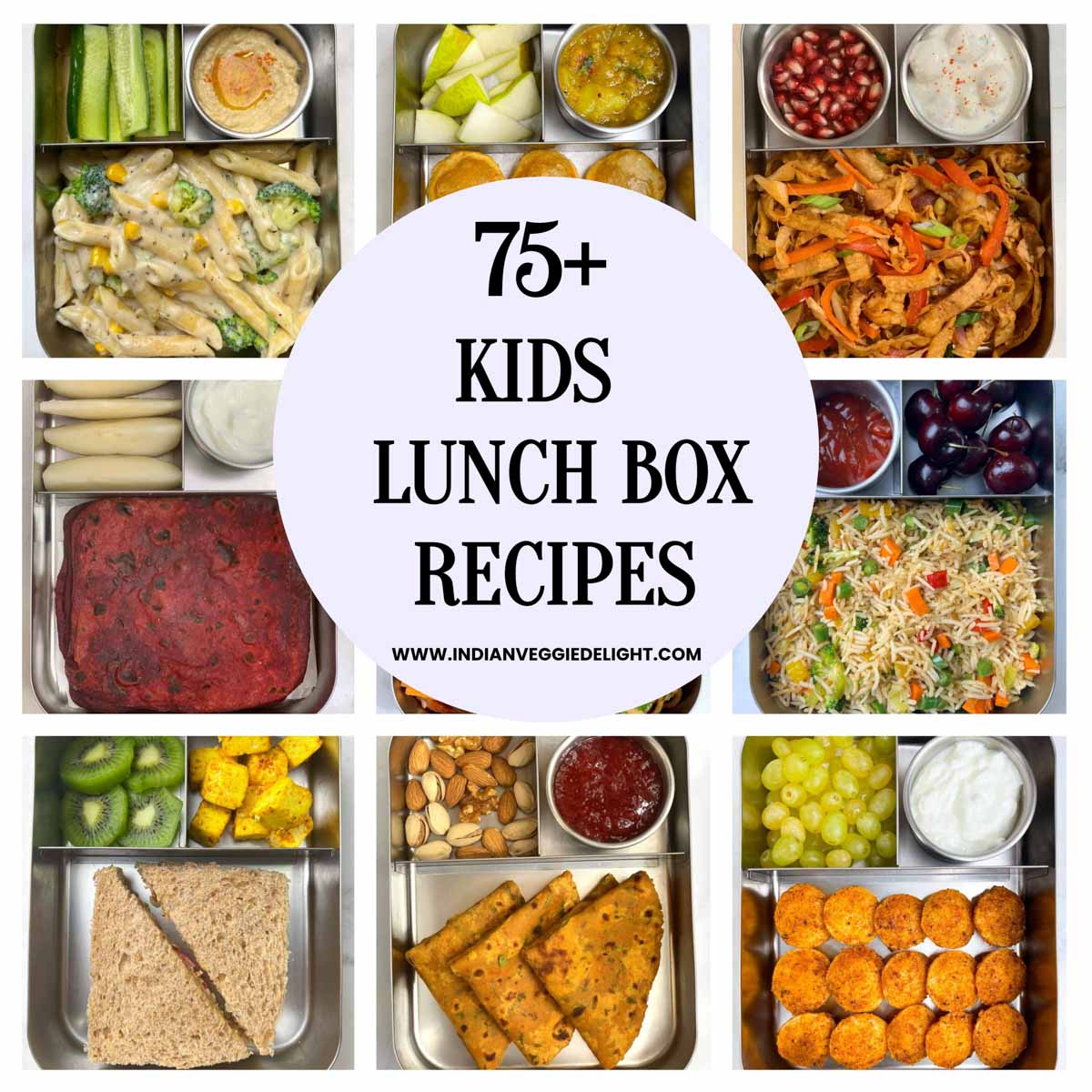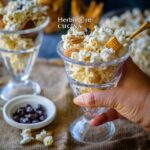Tired of expensive lunches that drain your wallet and leave you feeling uninspired? Imagine vibrant, flavorful vegetarian meals that are not only kind to your budget but also bursting with fresh ingredients and satisfying textures. This guide unveils a treasure trove of budget-friendly vegetarian lunch ideas, transforming your midday meal from a mundane chore into a culinary adventure. From quick and easy recipes ready in under 30 minutes to creative leftover makeovers, we’ll equip you with the knowledge and inspiration to create delicious, affordable, and healthy vegetarian lunches every day of the week.
We’ll explore a variety of options, including quick recipes perfect for busy weekdays, budget-friendly salads under $5, creative ways to transform leftovers, satisfying sandwiches and wraps, and hearty, warming soups. Each recipe is designed to be easily accessible, using common ingredients and simple preparation methods. Discover the joy of nutritious and delicious vegetarian lunches without breaking the bank!
Vegetarian Lunch Salads Under $5

Budget-friendly vegetarian lunches are surprisingly delicious and nutritious. These three salad recipes demonstrate how to create satisfying and visually appealing meals without breaking the bank. Each salad utilizes readily available ingredients and can be customized to your taste preferences.
Three Budget-Friendly Vegetarian Salads
These recipes highlight the versatility of simple ingredients to create flavorful and visually stunning salads, all while staying under a $5 budget per serving. We’ve focused on affordability and ease of preparation, making these perfect for busy weekdays.
- Mediterranean Quinoa Salad:
- Ingredients: 1 cup cooked quinoa ($1), ½ cup chopped cucumber ($0.50), ½ cup chopped tomatoes ($0.50), ¼ cup crumbled feta cheese ($1), ¼ cup Kalamata olives ($0.50), 2 tablespoons olive oil ($0.25), 1 tablespoon lemon juice ($0.25).
- Instructions: Combine all ingredients in a bowl. Toss gently to combine.
- Visual Appeal: The vibrant colors of the cucumber, tomatoes, and olives create a naturally appealing salad. A sprinkle of extra feta cheese and a drizzle of olive oil create a visually interesting texture and adds a touch of elegance. Serve in a shallow bowl to showcase the colorful ingredients.
- Black Bean and Corn Salad:
- Ingredients: 1 can (15 ounces) black beans ($1), 1 cup frozen corn ($1), ½ red onion, finely chopped ($0.50), ½ cup chopped cilantro ($0.50), 2 tablespoons lime juice ($0.25), 1 tablespoon olive oil ($0.25).
- Instructions: Rinse and drain the black beans. Combine all ingredients in a bowl. Toss gently.
- Visual Appeal: The contrasting colors of the black beans, yellow corn, and red onion make this salad visually striking. Chopped cilantro adds freshness and vibrancy. Serve in a clear glass bowl to highlight the colorful ingredients. Garnish with a lime wedge for an extra pop of color and a hint of acidity.
- Simple Chickpea Salad:
- Ingredients: 1 can (15 ounces) chickpeas ($1), ½ cup chopped celery ($0.50), ¼ cup chopped red onion ($0.25), 2 tablespoons mayonnaise ($0.50), 1 tablespoon Dijon mustard ($0.25).
- Instructions: Rinse and drain the chickpeas. Combine all ingredients in a bowl and mash lightly with a fork, leaving some chickpeas whole for texture.
- Visual Appeal: This salad might appear simple, but a thoughtful presentation can elevate it. Serve the salad on a bed of lettuce leaves for a more substantial look. A sprinkle of paprika adds a warm hue and subtle spice. You can also add a few chopped walnuts for visual and textural contrast.
Nutritional Benefits Infographic
The infographic would consist of three panels, one for each salad. Each panel would feature a visually appealing image of the completed salad, alongside a breakdown of its nutritional benefits.
- Mediterranean Quinoa Salad Panel: The image would show a vibrant salad with the quinoa and vegetables clearly visible, the feta cheese sprinkled attractively on top, and a light drizzle of olive oil. The text would highlight the high protein content from quinoa and feta, the fiber from quinoa and vegetables, and the healthy fats from olive oil. It would mention the benefits of antioxidants from the tomatoes and olives.
- Black Bean and Corn Salad Panel: The image shows the black beans, corn, and red onion in a visually appealing mix. The cilantro adds a pop of green. The text emphasizes the high fiber and protein content from black beans, the vitamins and antioxidants from corn, and the benefits of the red onion’s anti-inflammatory properties.
- Simple Chickpea Salad Panel: The image would showcase the chickpea salad served on lettuce leaves with a sprinkle of paprika and possibly chopped walnuts for visual contrast. The text would focus on the high protein and fiber content of chickpeas, the vitamins and minerals from celery, and the healthy fats from mayonnaise (in moderation). The benefits of the Dijon mustard as a source of antioxidants would also be highlighted.
Leftover Makeover
Transforming yesterday’s dinner into today’s delightful and economical lunch is a simple yet rewarding culinary adventure. Leftover vegetables and grains offer a fantastic foundation for budget-friendly vegetarian meals, bursting with flavor and minimizing food waste. With a little creativity, you can easily elevate these leftovers from simple reheats to exciting and satisfying lunchtime options.
Clever repurposing of cooked ingredients not only saves money but also reduces your environmental footprint by preventing food from ending up in the trash. This section explores practical and imaginative ways to revitalize your leftover vegetarian dishes, ensuring no delicious bite goes to waste.
Flavor and Texture Enhancement Techniques
Adding depth and intrigue to leftover vegetable dishes is key to preventing culinary monotony. The goal is to create a dynamic sensory experience, avoiding the blandness that can accompany reheated food. This can be achieved through a combination of strategic additions and cooking methods.
A simple sprinkle of fresh herbs, such as vibrant parsley, fragrant chives, or zesty cilantro, can instantly brighten the flavors of any leftover vegetable dish. A squeeze of lemon or lime juice adds a burst of acidity that cuts through richness and awakens the palate. Adding a dollop of creamy Greek yogurt or a drizzle of flavorful pesto provides a welcome textural contrast. Consider incorporating crunchy elements like toasted nuts or seeds, or a handful of crispy roasted chickpeas for added texture and satisfying sounds. Spices are your secret weapon; a dash of cumin, smoked paprika, or curry powder can transform a simple dish into a culinary masterpiece. Experiment with different combinations to find your favorites!
Five Creative Leftover Vegetarian Lunch Ideas
The following suggestions demonstrate the versatility of leftover cooked vegetables and grains, showcasing how easily they can be transformed into exciting and budget-friendly vegetarian lunches. Each recipe emphasizes both flavor enhancement and creative repurposing, maximizing the potential of your leftovers.
- Leftover Roasted Vegetable & Quinoa Bowl: Combine leftover roasted vegetables (like broccoli, bell peppers, and onions) with cooked quinoa. Toss with a lemon-tahini dressing and top with toasted pumpkin seeds for added crunch and nutty flavor. The vibrant colors of the roasted vegetables create a visually appealing and satisfying meal.
- Curried Vegetable and Chickpea Fritters: Mash leftover cooked vegetables (such as potatoes, carrots, and peas) with cooked chickpeas. Add a blend of warming curry spices, and form into small patties. Pan-fry until golden brown and serve with a dollop of yogurt or a side of chutney. The crispy exterior contrasts beautifully with the soft, flavorful interior.
- Leftover Grain Salad with Feta and Olives: Combine leftover cooked grains (such as brown rice or farro) with chopped leftover vegetables (like cucumber, tomatoes, and red onion). Crumble feta cheese over the top and add Kalamata olives for a salty, briny contrast. A simple vinaigrette of olive oil, lemon juice, and herbs ties the flavors together. The contrasting textures and tastes make for a delightful experience.
- Stuffed Bell Peppers with Leftover Rice and Beans: Halve bell peppers and fill them with a mixture of leftover cooked rice and beans, along with any other leftover vegetables you have on hand. Top with shredded cheese and bake until heated through and the cheese is melted and bubbly. The sweet peppers complement the savory rice and bean filling creating a hearty and satisfying meal.
- Vegetable and Lentil Soup: Combine leftover cooked vegetables and lentils with vegetable broth. Simmer until heated through, adding a touch of fresh herbs and a squeeze of lemon juice before serving. This is a simple, warming, and satisfying option perfect for cooler days. The hearty soup is packed with flavor and nutrients.
Effective Leftover Storage
Proper storage is crucial for maximizing the shelf life of your leftovers and minimizing food waste. Immediately after cooking, allow the food to cool completely before transferring it to airtight containers. These containers should be stored in the refrigerator within two hours of cooking. Clearly label each container with the date it was cooked, so you can easily identify and use your leftovers within a reasonable timeframe. Most cooked vegetables and grains can be safely stored in the refrigerator for three to four days. Freezing leftovers for longer storage is also a great option. Portion the leftovers into freezer-safe containers for easy thawing and use. Frozen leftovers can generally be stored for two to three months. Remember to always thaw frozen food completely in the refrigerator before reheating.
Budget-Friendly Vegetarian Sandwiches & Wraps
Savory and satisfying vegetarian sandwiches and wraps can be easily created on a budget, utilizing inexpensive ingredients and simple preparation methods. These recipes offer a delicious and nutritious alternative to more expensive lunch options, proving that healthy eating doesn’t have to break the bank. The following recipes highlight the versatility of beans, lentils, and readily available vegetables to create flavorful and filling meals.
Budget-Friendly Vegetarian Sandwich & Wrap Recipes
These three recipes showcase the ease and affordability of creating delicious vegetarian sandwiches and wraps. Each recipe offers a unique flavor profile and texture, utilizing readily available and inexpensive ingredients. The table below summarizes the recipes, highlighting their preparation time and key ingredients.
| Recipe Name | Ingredients | Preparation Time | Filling Description |
|---|---|---|---|
| Easy Black Bean & Corn Salsa Wrap | Whole wheat tortillas, canned black beans (rinsed and drained), canned corn (drained), diced red onion, chopped cilantro, lime juice, salt, pepper | 10 minutes | A vibrant and refreshing filling of black beans, corn, and a zesty lime-cilantro dressing. The slightly sweet corn complements the earthy beans. |
| Medium Lentil & Roasted Vegetable Sandwich | Whole grain bread, cooked brown or green lentils, roasted vegetables (such as bell peppers, zucchini, and carrots), hummus, Dijon mustard | 25 minutes (including roasting time) | Hearty and flavorful, this sandwich combines the protein-rich lentils with the sweetness of roasted vegetables. The hummus and mustard add creaminess and tang. |
| Hard Curried Chickpea & Spinach Wrap | Whole wheat tortillas, canned chickpeas (mashed), fresh spinach, red onion, curry powder, coconut milk (light), ginger, garlic | 30 minutes | A more complex and flavorful wrap featuring a creamy, curried chickpea filling with wilted spinach and the subtle bite of red onion. The coconut milk adds richness and depth. |
Nutritional Comparison of Bread Types
The choice of bread significantly impacts the nutritional profile of a vegetarian sandwich. Whole grain breads generally offer superior nutritional value compared to refined white bread. Whole grain options are typically higher in fiber, which aids digestion and promotes satiety, leading to better blood sugar control. They also provide more essential vitamins and minerals, such as iron and B vitamins. White bread, while often softer and more palatable to some, is typically lower in fiber and nutrients. Rye bread offers a distinct flavor and is also a good source of fiber. The choice depends on individual preference and dietary needs, but prioritizing whole grain options generally contributes to a healthier and more nutritious meal.
Unlocking the secrets to budget-friendly vegetarian lunches doesn’t require sacrificing flavor or nutrition. By embracing simple recipes, utilizing leftovers creatively, and focusing on affordable, seasonal ingredients, you can transform your midday meal into a vibrant and satisfying experience. This guide has provided a diverse range of options, from quick and easy recipes to hearty soups and creative salad combinations, ensuring that you’ll always have a delicious and budget-conscious vegetarian lunch ready to enjoy. So, embark on your culinary journey, experiment with these ideas, and discover the endless possibilities of affordable and delicious vegetarian eating!
Query Resolution
Can I substitute ingredients in these recipes?
Absolutely! Many of the recipes are flexible and allow for ingredient substitutions based on your preferences and dietary needs. Feel free to experiment with different vegetables, beans, grains, and spices to create your own unique variations.
How can I make these lunches even more affordable?
Buy in bulk when possible, utilize seasonal produce, and plan your meals ahead to minimize food waste. Consider growing your own herbs or vegetables if you have space.
How long can I store leftover vegetarian lunches?
Properly stored leftovers generally last 3-4 days in the refrigerator. Always ensure they are cooled completely before refrigerating to prevent bacterial growth.
Are these recipes suitable for meal prepping?
Yes! Many of these recipes are ideal for meal prepping. Prepare larger batches on the weekend and portion them out for lunches throughout the week.


